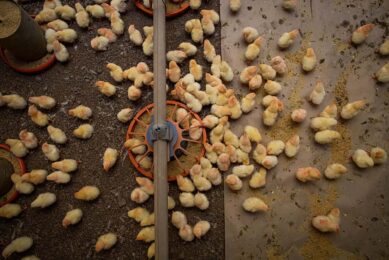Delacon Performing Nature Symposium – Day 2

The second day of the Delacon Performing Nature Symposium held at Crete Island had a strong focus on relationship of nutrition and immunity and how we can reduce the ammonium output by nutritional means.
Jürgen Zentek from the Free University in Berlin, Germany opened the second day of the event by giving an overview of the immune system in monogastric animals and the role nutrition can have to boost it. He addressed that the gastro intestinal tract of animal is the biggest immune organ and the barrier to the “outer world”. It has the purpose to uptake nutrients but also refuse pathogens from this outer world.
“We can steer this to a certain extent by the choice of ingredients in the animal diets” according to Zentek. He specifically mentioned that the weaning period in pigs is a very stressful event, and in turn give a drop in immune responses. Nutritionists should be aware of this, and add specific immune boosting additives at this stage of the production cycle. Examples of these additives are plant extracts and beta-glucans.
Mycotoxins – an ongoing menace
Dr. Carlos Mallman from the Federal University of Santa Maria in Brazil updated the audience on an ongoing problem the feed industry faces – mycotoxins. “Especially the aflatoxins are the problem, as they are producing a very carcinogenic toxin”. Mycotoxins are a threat to animals as they increase the animal’s susceptibility to infections, reactivate chronic diseases and reduce the efficacy of vaccines and animal medication. “In Brazil, 43% of the maize is contaminated with mycotoxins, finding solutions is therefore key in the animal feed sector”, Mallman concluded.
AGP global overview
Lucas Cypriano from Eurotec in Brazil (pictured) gave a summary about the synergy phytogenics can have with antibiotic growth promoters. “Having a phytogenic product often is used with an AGP when it is still allowed, and we see a synergetic effect in combining the two”, Cypriano explained. However, it still remains unclear why this interaction occurs. Brazilian poultry farmers not always use a combination treatment of an AGP and a phytogenic product, but pig farms in Brazil are always using a combination.
Ammonia reduction
Carlos Pineiro from Spain pointed out some of the remedies to minimize the ammonia output from livestock production. Livestock produces 37% of the total global methane output, 65% of the total global N oxide and 64% of the total global ammonia output. “As a livestock industry we therefore have to take our responsibility to find solutions to bring these numbers down”, said Pineiro. Ammonia not only is a big threat to the environment it can also causes harm to the animals itself. Pigs may experience respiratory problems when they are in contact with ammonia in the barn. The epithelium of the lungs will be irritated, which may lead to production losses. As possible solutions Pineiro named the reduction of crude protein in the diet – reducing 1 point crude protein can lead to an ammonia reduction of 60%, the implementation of phase feeding – shifting to a two phase feeding can reduce the ammonia output with 10%, the use of specific feed additives such as phytogenics to improve the utilization of the raw protein and to reduce the urease activity (urease speeds up the formation of ammonia).
Related link:
Delacon Phytogenic Feed Additives
Join 31,000+ subscribers
Subscribe to our newsletter to stay updated about all the need-to-know content in the poultry sector, three times a week. Beheer
Beheer








 WP Admin
WP Admin  Bewerk bericht
Bewerk bericht